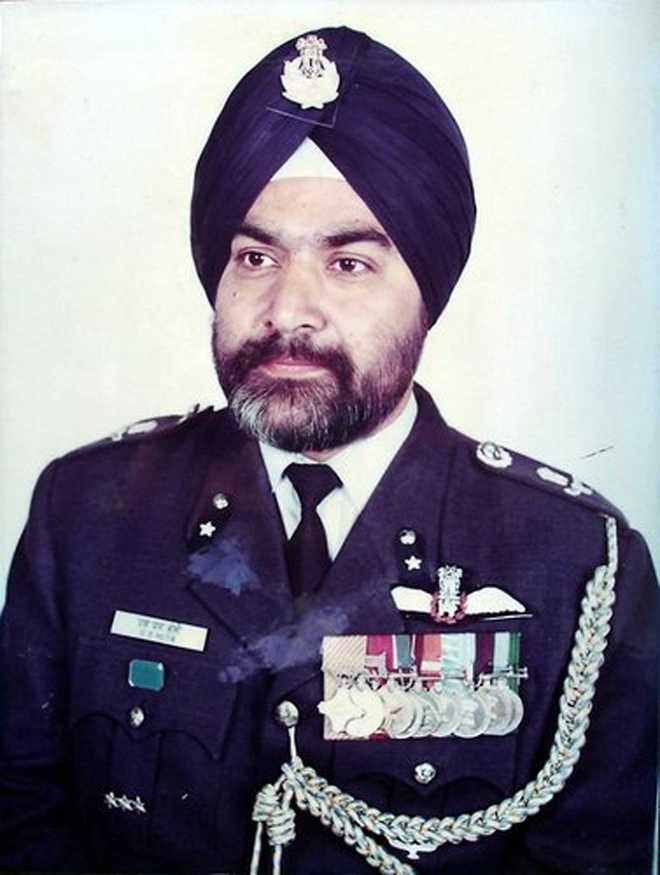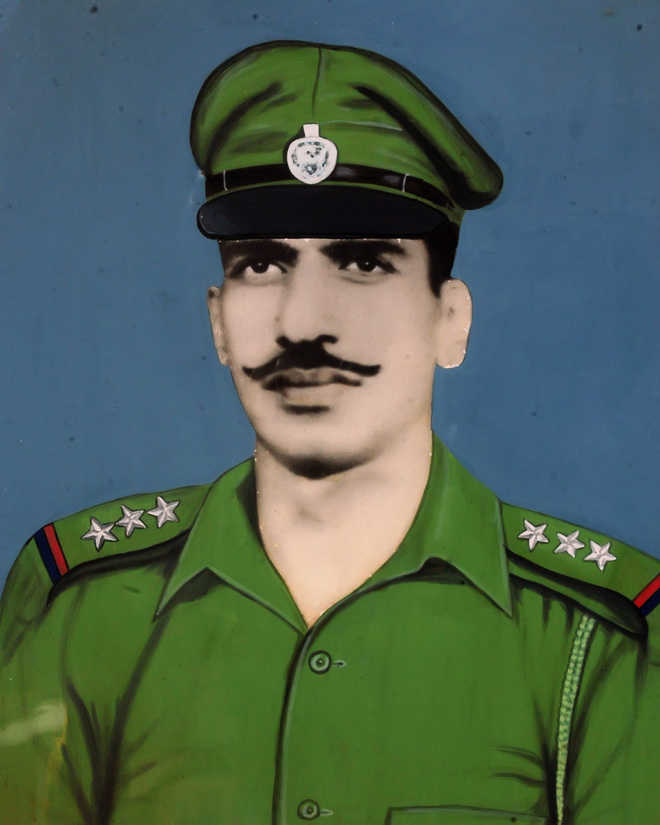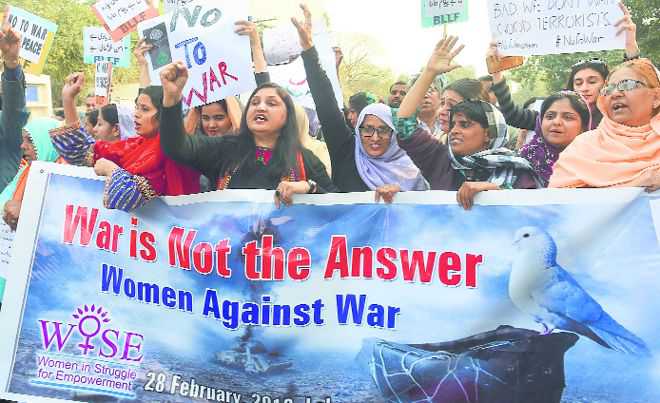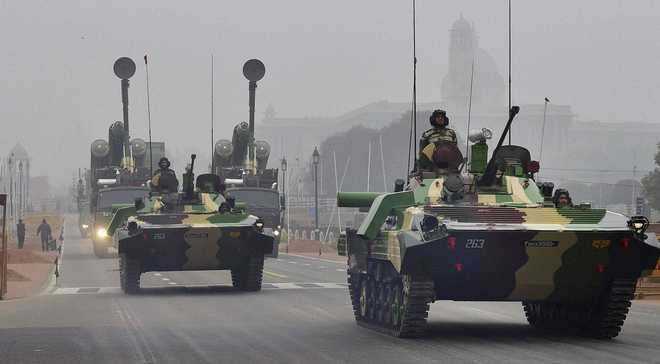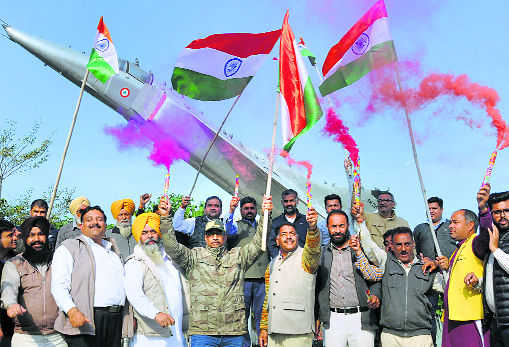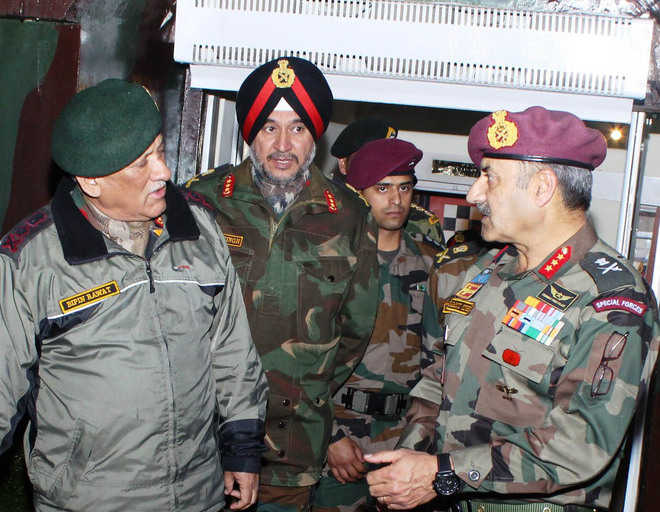Most of Modi government’s arguments to deny non-functional upgrade to the armed forces won’t stand a layman’s scrutiny let alone legal scrutiny.
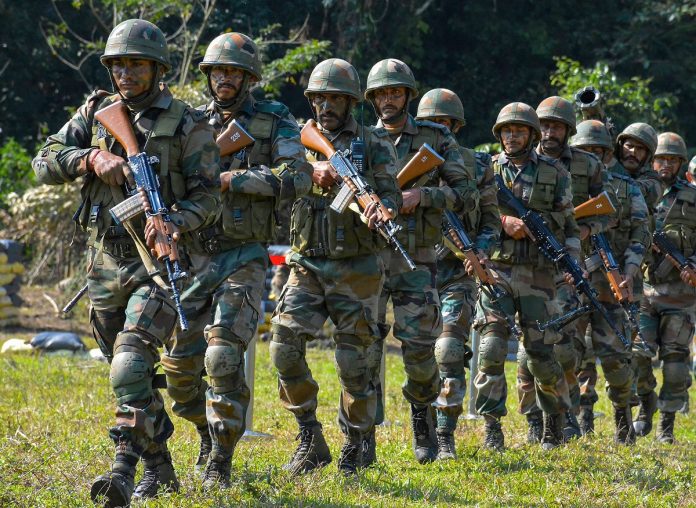
The irony is hard to miss. While India celebrates the performance of the armed forces in the recent, short-lived conflict with Pakistan in Balakot and the political class exploits them for electoral gains, the military personnel continue to fight a battle with the government in the Supreme Court.
The case pertains to not granting non-functional upgradation (NFU) to the officers of the armed forces that members of some other central services enjoy. The government has been delaying and dithering on financially compensating India’s armed forces that lack adequate promotional avenues.
What is NFU? How does it work?
Civil services are classified into All India Services – Indian Administrative Service (IAS), Indian Police Service (IPS) and Indian Forest Service (IFS) – and Central Civil Services (CCS) – Group A and Group B. Based on cadre review, the CCS Group A have been further sub-divided into Organised (constituted by the Cadre Controlling Authority) and Non-Organised.
Keeping in view the stagnation in promotion of CCS Group A officers, the Sixth Central Pay Commission recommended NFU, linking their pay scales with those of their batch officers in the IAS. So, two years after the IAS officers are promoted, their batchmates in these services are automatically upgraded to the same level on a non-functional basis, irrespective of whether they are actually promoted or not. The usual system of promotion, meanwhile, continues. This upgrading is applicable for all ranks of officers up to the rank of Additional Secretary.
Non-grant of NFU to certain services
The government had initially granted NFU to only CCS Group A (Organised) even though the pay commission made no such distinction. In 2008 it was extended to the All India Services — IPS and IFS. The IAS as such is not entitled to NFU but its promotions are used as a benchmark as these are much faster than the other services.
The officers of the armed forces face maximum stagnation due to the conical pyramidical structure. An IAS officer gets promoted to the rank of Joint Secretary, equivalent to a Major General, after 18 to 20 years in service. An army officer becomes due for promotion to the rank of Major General with 32 to 33 years in service. Most army officers retire in the rank of Colonel at age of 54 years, while all IAS officers retire as Additional Secretary and above, which is equivalent to Lt Gen and above.
Also read: Good intentions, bad HR practice: Inducting civil service aspirants into the armed forces
The government’s stand in not extending the NFU to the armed forces and the Central Armed Police Forces (CAPF) was that these two forces do not meet the criteria of being ‘Organised’ as per the policy laid down.
A bitter battle has ensued over the last decade between the CAPF and the Ministry of Home Affairs, and between the armed forces and the Ministry of Defence. The CAPF’s case went to the Supreme Court, which upheld the judgment of the Delhi High Court on 5 February 2019, which granted them NFU.
Case of the armed forces
The armed forces, on the other hand, found hurdle in a government unwilling to extend the NFU to them. Years after first taking up the matter in 2008, the armed forces strongly presented its case before the Seventh Central Pay Commission. While its chairman supportedtheir inclusion in the NFU system, the other two members found the NFU concept flawed. They said it was unmeritorious and must be done away with for all services. The government took advantage of this ambiguity and summarily rejected the case, causing a lot of resentment among both the serving and the retired officers.
After dilly-dallying by the government at subsequent hearings, the case was finally heard on 12 March 2019. The judgement stands reserved.
Government’s arguments – and counter-arguments
Most of the arguments presented by the government would not withstand a layman’s scrutiny let alone legal scrutiny. For instance:
Policy making is government’s exclusive domain.Yes, it is indeed, but all our pay commissions have correlated the pay and allowances of all services, including the armed forces, and tried to maintain parity. The government should be responsible enough to ensure that its policies are on an equal basis and not selective and biased against the armed forces.
Constitutional right to equality enshrined in Article 14 and 16 is not applicable to armed forces.This is untenable. While Article 33 of theConstitution empowers Parliament to restrict or abrogate somefundamental rights of the armed forces, to misinterpret it to include right to equality in salary and status goes against the very spirit of theConstitution.
Also read: Central Armed Police Forces to finally get pay parity with their IPS counterparts
NFU to armed forces will have adverse effect on status, command and control, discipline, efficiency and morale, and reduce the desire to aspire for higher ranks. If anything, the NFU will only provide a greater degree of motivation to super ceded officers. The armed forces have enough safeguards in form of rules, regulations, law and the appraisal system to deal with errant, non-motivated and non performing officers.
NFU will result in additional financial burden on government.On 12 March 2019 the government for the first time gave out the details of the financial burden – ₹1,065 crore for arrears and ₹269 crore as annual recurring cost. If the financial burden is unbearable, then NFU should be scrapped for all services. The arrears can be given in instalments and Rs 269 crore is hardly a burden on the government.
Armed forces enjoy various prerequisites and amenities that are not available to the civil services.Most of the ‘subsidised’ amenities are available at par to the other services in one form or the other. Apart from these, the other facilities are from the armed forces private funds built up over the years through contributions by all ranks. This argument only reflects on the petty mind of the bureaucrats.
The armed forces are entitled to Military Service Pay (MSP).The MSP is based on the erstwhile Special Disturbance Allowance. It is meant to address the intangible constraints and disadvantages unique to military personnel. It is certainly not a compensation for financial loss due to stagnation which is the basis for the NFU.
Also read: If India continues to politicise military, we may not look very different from Pakistan
Either due to ignorance or guided by inappropriate advice, the governments since Independence have discriminated against the armed forces in the matter of pay and allowance. Anomalies of pay commissions are only resolved through prolonged litigation stretching over 10-15 years.
The government should be responsible enough to ensure that its policies are on an equal basis and not selective and biased against the armed forces.
The armed forces are in the hearts and minds of the public and the political parties hope to win elections by exploiting the soldiers, and yet the government is fighting them tooth and nail in courts for a mere Rs 269 crore.
Lt Gen H S Panag PVSM, AVSM (R) served in the Indian Army for 40 years. He was GOC in C Northern Command and Central Command. Post retirement, he was Member of Armed Forces Tribunal.
Separate fact from fiction, the real from the fake going viral on social media, on HoaXposed .
Email
Dear Col Raghbir,
1. Col Mukul Dev, the lone fighter for NFU, just now called me up at 1840 hrs on 21 Mar 2019 and spoke to me for a long time. He gave me chronological sequence of events of his legal case which I have to explain to you and other members of TSEWA, so that we all are in same grid / wavelength /page.
2. Col Mukul Dev also spoke to me some time back (may be two years) and informed me that he has filed a case for grant of NFU to Armed Forces Officers. I offered him financial support from TSEWA . I visualized at that time itself, that even if he wins the case in AFT Delhi, Min of Def will drag him to Hon’ble Supreme Court as per their SOP. But he politely refused my offer for any financial support. I promised full support of TSEWA for a cause he is fighting for all Armed Forces Officers. Since OROP was sanctioned, I felt all the Pre – 2013 Officers retired will definitely get benefit in OROP – 2018 (even if we do not get benefit in OROP – 2013).
3. What Col Mukul Dev told me today is that he alone filed a case in 2015 in Hon’ble AFT Delhi praying for grant of NFU to Armed Forces Officers and the same was admitted sometime in early 2016. After he filed the case slowly 259 other officers (serving and retired) also filed individual cases in AFT Delhi. That means the cases are not Class Action Suits. Col Mukul Dev was given OA No and so are the other 259 officers. AFT Delhi as per their procedure clubbed all the OAs and delivered on 23 Dec 2016 one common judgment granting NFU not only to those petitioners but to other officers who are not petitioners in AFT Delhi. That means all officers serving and retired will get benefit of NFU from Dec 2013 and they will be paid arrears on account of NFU from 23 Dec 2013 to 23 Dec 2016. You can work out arrears of three years between pay of Lt Col and Maj Gen for three years.
4. The Min of Def went on appeal against judgment of AFT Delhi for granting NFU to Armed Forces Officers whether they were petitioners or not in 2018. Hon’ble Supreme Court then clubbed the 259 other officers tand also clubbed the case of Col Mukul Dev. Arguments are completed on 12 Mar 2019 and judgment is reserved.
5. Col Mukul Dev has nothing do with those 259 officers out of whom he said two have already passed away. In the remaining 257, some of them are serving officers and some are retired officers. The Registry of Hon’ble Supreme Court found that Min of Def have not served notices on those 58 out of 257 officers who are respondents. Col Mukul Dev is also one of the respondents. The Hon’ble Supreme Court directed that Min of Def should in next two weeks serve notices on those 58 officers as per the court procedure. Since the Min of Def is the appellant it is mandatory to issue notice to 257 + Col Mukul Dev of their intention of appealing against the judgment of AFT Delhi delivered on 23 Dec 2016 granting NFU to Armed Forces Officers.
7. What I could understand from Col Mukul Dev’s talks, now the responsibility of serving notices on 58 respondent officers is that of Min of Def and Col Mukul Dev is in no way connected with them. However, to ensure the Govt of India does not ask for adjournment on some pretext of serving notices to those 58 officers, he has taken upon himself the responsibility of contacting those 58 officers who it was found did not submit vakalatnamas to their respective advocates. I understand all those 259 officers filed individual appeals in AFT Delhi in 2016 therefore might have employed few advocates to argue their case in AFT Delhi.
8. I also told him that TSEWA has also requested its members to approach those 58 officers less those who passed away to submit vakalatnamas.
9. Col Mukul Dev informed me that when contacted some of the respondents out of 58 have said they are not interested in the case and some have flatly refused to pay pittance of Rs 5,000 as legal fees to the advocate on record. He further assured those kanjoos officers to submit the vakalatnamas without any legal fees. Col Mukul Dev informed me that 30 officers have already submitted their vakalatnamas.
10. Now the position is bit clearer to me. Whether others submit vakalatnamas or not the case will be finally disposed of either by end of Apr 2019 or middle of May 2019.
11. I also read in Whatsapp the observation of Justice Joseph who heard the argument of ld AG for not sanctioning NFU. The hon’ble justice reported to have told the learned AG “ Yesterday you were requesting in very humble way not to order any enquiry against Rafale case due to National security but today you are arguing forcefully why Govt of India should not grant NFU to Armed Forces who are defenders of National Security”. This indicates how the winds are blowing.
12. Therefore TSEWA members also should try to contact these 58 officers or 56 ( as I am told two officers have passed away) to immediately submit their vakalatnams to their respective advocates or to one lady who is advocate on record even without Rs 5,000.
13. I told Col Mukul Dev that I became little aware of what is NFU after going over his table as to when IAS officers get empaneled to Jt Secy and Addl Secy and how Lt Cols to Maj Gens will get pay of Maj Gen and Lt Gen after 19 and 31 years of service respectively and how even retired officers will get benefit of OROP – 2013, benefit of higher pension as on 01 Jan 2016 and how much arrears we all will get.
14. Again, I offered all support of TSEWA to Col Mukul Dev and told him that we all stand behind him solidly and he just has to ask us to do and it will done without demur.
15. Hopefully once the judgment of Hon’ble Supreme Court sanctions NFU to Armed Forces Officers, there is no need for any agitation for OROP etc.
Warm regards,
Brig CS Vidyasagar (Retd)
040-48540895








